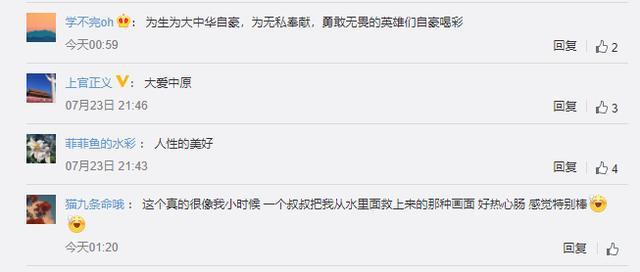KotlinйӣҶеҗҲvs KotlinеәҸеҲ—дёҺJavaжөҒ
дёҖ. йӣҶеҗҲдёӯзҡ„еҮҪж•°ејҸ APIиҷҪ然 Kotlin Collection дёӯзҡ„еҮҪж•°ејҸ API зұ»дјјдәҺ Java 8 Stream дёӯзҡ„ API гҖӮ дҪҶжҳҜ Kotlin зҡ„йӣҶеҗҲи·ҹ Java зҡ„йӣҶеҗҲ并дёҚдёҖиҮҙ гҖӮ
Kolin зҡ„йӣҶеҗҲеҲҶдёәеҸҜеҸҳйӣҶеҗҲ(mutable collection)е’ҢдёҚеҸҜеҸҳйӣҶеҗҲ(immutable collection) гҖӮ дёҚеҸҜеҸҳйӣҶеҗҲжҳҜ ListгҖҒSetгҖҒMap пјҢ е®ғ们жҳҜеҸӘиҜ»зұ»еһӢ пјҢ дёҚиғҪеҜ№йӣҶеҗҲиҝӣиЎҢдҝ®ж”№ гҖӮ еҸҜеҸҳйӣҶеҗҲжҳҜ MutableListгҖҒMutableSetгҖҒMutableMap пјҢ е®ғ们жҳҜж”ҜжҢҒиҜ»еҶҷзҡ„зұ»еһӢ пјҢ иғҪеӨҹеҜ№йӣҶеҗҲиҝӣиЎҢдҝ®ж”№зҡ„ж“ҚдҪң гҖӮ
Kotlin йӣҶеҗҲдёӯзҡ„еҮҪж•°ејҸ API и·ҹеӨ§йғЁеҲҶж”ҜжҢҒ Lambda иҜӯиЁҖзҡ„еҮҪж•°ејҸ API йғҪзұ»дјј гҖӮ дёӢйқўд»…д»Ҙ filterгҖҒmapгҖҒflatMap дёүдёӘеҮҪж•°дёәдҫӢ пјҢ жј”зӨәдҪҝз”ЁйӣҶеҗҲзҡ„й«ҳйҳ¶еҮҪж•° гҖӮ
1.1 filter зҡ„дҪҝз”ЁиҝҮж»ӨйӣҶеҗҲдёӯеӨ§дәҺ10зҡ„ж•°еӯ— пјҢ 并жҠҠе®ғжү“еҚ°еҮәжқҘ гҖӮ
listOf(5, 12, 8, 33)// еҲӣе»әlistйӣҶеҗҲ.filter { it > 10 }.forEach(::println)жү§иЎҢз»“жһңпјҡ
1233::println жҳҜж–№жі•еј•з”ЁпјҲMethod Referenceпјү пјҢ е®ғжҳҜз®ҖеҢ–зҡ„ Lambda иЎЁиҫҫејҸ гҖӮ
дёҠиҝ°д»Јз Ғзӯүд»·дәҺдёӢйқўзҡ„д»Јз Ғпјҡ
listOf(5, 12, 8, 33).filter { it > 10 }.forEach{ println(it) }1.2 map зҡ„дҪҝз”Ёе°ҶйӣҶеҗҲдёӯзҡ„еӯ—з¬ҰдёІйғҪиҪ¬жҚўжҲҗеӨ§еҶҷ пјҢ 并жү“еҚ°еҮәжқҘ гҖӮ
listOf("java","kotlin","scala","groovy").map { it.toUpperCase() }.forEach(::println)жү§иЎҢз»“жһңпјҡ
JAVAKOTLINSCALAGROOVY1.3 flatMap зҡ„дҪҝз”ЁйҒҚеҺҶжүҖжңүзҡ„е…ғзҙ пјҢ дёәжҜҸдёҖдёӘеҲӣе»әдёҖдёӘйӣҶеҗҲ пјҢ жңҖеҗҺжҠҠжүҖжңүзҡ„йӣҶеҗҲж”ҫеңЁдёҖдёӘйӣҶеҗҲдёӯ гҖӮ
val newList = listOf(5, 12, 8, 33).flatMap {listOf(it, it + 1)}println(newList)жү§иЎҢз»“жһңпјҡ
[5, 6, 12, 13, 8, 9, 33, 34]дәҢ. SequenceеәҸеҲ—(Sequence)жҳҜ Kotlin ж ҮеҮҶеә“жҸҗдҫӣзҡ„еҸҰдёҖз§Қе®№еҷЁзұ»еһӢ гҖӮ еәҸеҲ—дёҺйӣҶеҗҲжңүзӣёеҗҢзҡ„еҮҪж•° API пјҢ еҚҙйҮҮз”ЁдёҚеҗҢзҡ„е®һзҺ°ж–№ејҸ гҖӮ
е…¶е®һ пјҢ Kotlin зҡ„ Sequence жӣҙзұ»дјјдәҺ Java 8 зҡ„ Stream пјҢ дәҢиҖ…йғҪжҳҜ延иҝҹжү§иЎҢ гҖӮ Kotlin зҡ„йӣҶеҗҲиҪ¬жҚўжҲҗ Sequence еҸӘйңҖдҪҝз”ЁasSequence()ж–№жі• гҖӮ
listOf(5, 12, 8, 33).asSequence().filter { it > 10 }.forEach(::println)дәҰжҲ–иҖ…дҪҝз”ЁsequenceOf()жқҘзӣҙжҺҘеҲӣе»әж–°зҡ„ Sequenceпјҡ
sequenceOf(5, 12, 8, 33) // еҲӣе»әsequence.filter { it>10 }.forEach (::println)еңЁ Kotlin 1.2.70 зҡ„ release note дёҠжӣҫиҜҙжҳҺпјҡ
дҪҝз”Ё Sequence жңүеҠ©дәҺйҒҝе…ҚдёҚеҝ…иҰҒзҡ„дёҙж—¶еҲҶй…ҚејҖй”Җ пјҢ 并且еҸҜд»ҘжҳҫзқҖжҸҗй«ҳеӨҚжқӮеӨ„зҗҶ PipeLines зҡ„жҖ§иғҪ гҖӮ
дёӢйқўзј–еҶҷдёҖдёӘдҫӢеӯҗжқҘиҜҒе®һиҝҷдёӘиҜҙжі•пјҡ
@BenchmarkMode(Mode.Throughput) // еҹәеҮҶжөӢиҜ•зҡ„жЁЎејҸ пјҢ йҮҮз”Ёж•ҙдҪ“еҗһеҗҗйҮҸзҡ„жЁЎејҸ@Warmup(iterations = 3) // йў„зғӯж¬Ўж•°@Measurement(iterations = 10, time = 5, timeUnit = TimeUnit.SECONDS) // жөӢиҜ•еҸӮж•° пјҢ iterations = 10 иЎЁзӨәиҝӣиЎҢ10иҪ®жөӢиҜ•@Threads(8) // жҜҸдёӘиҝӣзЁӢдёӯзҡ„жөӢиҜ•зәҝзЁӢж•°@Fork(2)// иҝӣиЎҢ fork зҡ„ж¬Ўж•° пјҢ иЎЁзӨә JMH дјҡ fork еҮәдёӨдёӘиҝӣзЁӢжқҘиҝӣиЎҢжөӢиҜ•@OutputTimeUnit(TimeUnit.MILLISECONDS) // еҹәеҮҶжөӢиҜ•з»“жһңзҡ„ж—¶й—ҙзұ»еһӢopen class SequenceBenchmark {@Benchmarkfun testSequence():Int {return sequenceOf(1,2,3,4,5,6,7,8,9,10).map{ it * 2 }.filter { it % 3== 0 }.map{ it+1 }.sum()}@Benchmarkfun testList():Int {return listOf(1,2,3,4,5,6,7,8,9,10).map{ it * 2 }.filter { it % 3== 0 }.map{ it+1 }.sum()}}fun main() {val options = OptionsBuilder().include(SequenceBenchmark::class.java.simpleName).output("benchmark_sequence.log").build()Runner(options).run()}йҖҡиҝҮеҹәеҮҶжөӢиҜ•еҫ—еҲ°еҰӮдёӢзҡ„з»“жһңпјҡ
# Run complete. Total time: 00:05:23REMEMBER: The numbers below are just data. To gain reusable insights, you need to follow up onwhy the numbers are the way they are. Use profilers (see -prof, -lprof), design factorialexperiments, perform baseline and negative tests that provide experimental control, make surethe benchmarking environment is safe on JVM/OS/HW level, ask for reviews from the domain experts.Do not assume the numbers tell you what you want them to tell.BenchmarkModeCntScoreErrorUnitsSequenceBenchmark.testListthrpt2015924.272 Вұ 305.825ops/msSequenceBenchmark.testSequencethrpt2023099.938 Вұ 515.524ops/ms
жҺЁиҚҗйҳ…иҜ»
- leetcodeд№Ӣй”ҷиҜҜзҡ„йӣҶеҗҲ
- macжҠҖе·§пҪңжҹҘжүҫ Mac зҡ„жңәеһӢеҗҚз§°е’ҢеәҸеҲ—еҸ·еӣӣз§Қж–№жі•
- иҜҰи§ЈHashMapйӣҶеҗҲ
- е…ідәҺListйӣҶеҗҲпјҢиҝҷд»ҪжҖ»з»“еҫҲе…Ёйқў
- 马ж–Ҝе…Ӣпјҡзү№ж–ҜжӢүжҳҜеҚҒеӨҡ家еҲқеҲӣдјҒдёҡзҡ„йӣҶеҗҲ зңӢеҘҪдҝқйҷ©дёҡеҠЎ
- еҶ…е®№жҺЁиҚҗз®—жі•пјҡејӮжһ„иЎҢдёәеәҸеҲ—е»әжЁЎжҺўзҙў
- иҝ‘20е№ҙWindowsжқғйҷҗжҸҗеҚҮйӣҶеҗҲ
- еҝ«йҖҹеӯҰд№ Javaдёӯзҡ„CopyOnWriteйӣҶеҗҲ
- javaзҡ„еҗ„з§ҚйӣҶеҗҲдёәд»Җд№ҲдёҚе®үе…ЁпјҲListгҖҒSetгҖҒMapпјүпјҹ
- 收и—ҸдәҶпјҒ70%зҡ„зЁӢеәҸе‘ҳйғҪдёҚзҹҘйҒ“зҡ„еәҸеҲ—еҢ–з»ҶиҠӮпјҢжё…жҷ°жҳҺдәҶ




















